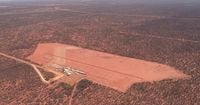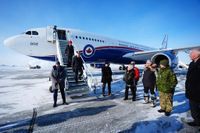In a significant move to enhance its Arctic security, Canada's Prime Minister Mark Carney announced on March 18, 2025, the intention to acquire a long-range, over-the-horizon (OTH) radar system from Australia. This decision followed a crucial conversation with Australian Prime Minister Anthony Albanese and marks a strategic partnership aimed at addressing growing geopolitical threats in the North.
The radar system in question is an evolution of the Jindalee Operational Radar Network (JORN), an advanced surveillance technology primarily designed to detect airborne and maritime objects across vast distances—up to 3,000 kilometers. Mark Carney described this acquisition as essential for bolstering Canada's ability to monitor and protect its northern approaches, emphasizing the importance of sovereignty in the face of increasing tensions, particularly from Russia and China.
"Today I’m announcing that our government will be working with our long-standing defence and security partner Australia to build a new, long-range, over-the-horizon military radar system," Carney stated during his visit to Iqaluit, located in Nunavut's Arctic region. He added, "Canada is, and forever will be, an arctic nation, and we can never take our sovereignty and security in the region for granted." This partnership comes at a time when the United States, under President Donald Trump, has made aggressive moves, including discussing the annexation of Canada as the US's 51st state, thereby increasing the urgency for Canada to shore up its defenses.
The JORN system, initially developed in the 1980s, utilizes high-frequency electromagnetic waves reflected off the ionosphere to identify threats that conventional radar systems cannot detect due to the Earth's curvature. Australia's Defence Minister Richard Marles noted the technological sophistication of JORN, stating, "What we saw was a really positive statement from the Canadian Prime Minister around Over the Horizon Radar technology that has been developed in Australia. This is exquisite technology which Canada is looking at exploring and working with Australia to see whether they can put this in place in terms of their own needs."
This $6 billion radar project is not just about equipment; it reflects a concerted effort by Canada to modernize its defense capabilities under the North American Aerospace Defence Command (NORAD) modernization plan. Canadian officials have outlined that the expected operational capabilities of this radar will play a crucial role in detecting and deterring threats, including incoming missiles and hypersonic projectiles designed to evade traditional missile defense systems.
In addition to the radar system acquisition, Carney announced an immediate investment of C$420 million to ensure a sustained Canadian Armed Forces presence in the Arctic. This comes as vital assistance amid concerns regarding Canada's Arctic sovereignty, particularly with increasing ease of access due to climate change and foreign interests vying for control over emerging routes and resources in the region. The radar agreement is also expected to create a series of monitoring pillars to enhance situational awareness across the airspaces.
"The world is changing. Our adversaries are increasingly emboldened. International institutions and norms that have kept Canada secure are now being called into question," Carney warned, showcasing the urgency behind these developments. Furthermore, the Prime Minister disclosed that the radar would help facilitate greater collaboration with the United States to strengthen North American defenses amidst an evolving threat landscape driven by advancements in missile technology.
Reports suggest that this acquisition, while positioned as enhancing Canada’s defense posture, has also sparked discussions about potential shifts in military procurement policy, especially given the political climate of Canada and the United States. Federal officials indicated that the incorporation of Australian technology is well-received within the NORAD command, although they refrained from commenting on how this would be perceived in Washington.
As Carney proceeds with the announcements and expected operational timelines—including a hope for the system to be fully operational by 2029—Canada seeks to reaffirm its sovereignty and protect its northern territories. In a climate of increasing tensions and a call for bolstered military spending, this partnership with Australia is poised to redefine aspects of Canada's defense strategy and collaborative efforts with allies.
Political analysts highlight that while the defense sharing agreement marks a remarkable step for Canada, it underscores a broader trend of escalating military commitments in light of global threats. As nations re-evaluate their defense strategies, the specifics of this deal could pave the way for stronger trilateral cooperation involving Canada, the United States, and Australia.




